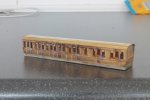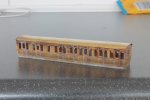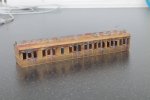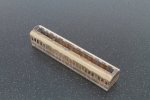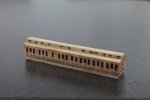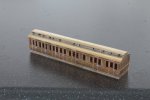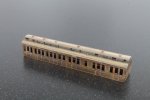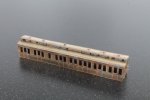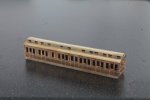Having been in the modelling doldrums for several months where virtually no railway modelling has occurred in Modbury Towers, over the last three or four weeks mojo has finally returned!!
With Modbury due to attend the Loughborough exhibition in August, I have finally managed to complete the first two bogie coaches for Modbury. They are a D37 Van Third and a C4 All Third, sides and ends coming from Worsley Works with the bogies being my own etches (although the functional carcass of the 10'0" ones under the D37 were provided by Richard Brummitt with the cosmetic bits coming from my own 8'6" bogies.
The coaches in question were last seen several months ago and an aborted attempt to paint the C4 led them both to be consigned to their respective bags and put aside. Following a bit of mojo return, the D37 was finally structurally completed a couple of weeks ago, and since then the pair have progressed through the Smith paint shop.
Here are a few snaps of the pair on Modbury's embankment :
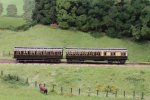
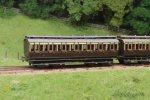
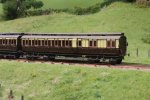
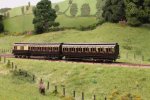
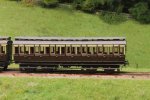
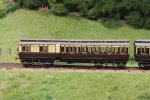
On Saturday, I took the pair along to the 2mm Expo at Derby and entered them in the modelling competitions, and am proud to say that they were awarded the "Chairman's Trophy"!! Thank you Chairman Alisdair!
With the successful completion of that pair, mojo is now fully restored, so I have now made a start on the next one in the rake - another from the Worsley Works stable, a 1st/2nd Composite (sold as an E14 but actually is an E17).
Description of that build will have to commence in a new post as I seem to have reached the picture limit in this one!
Thanks for looking,
Ian

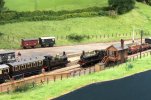

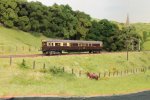


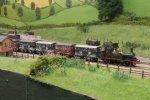

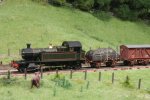
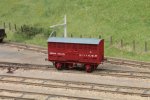
 )
)





